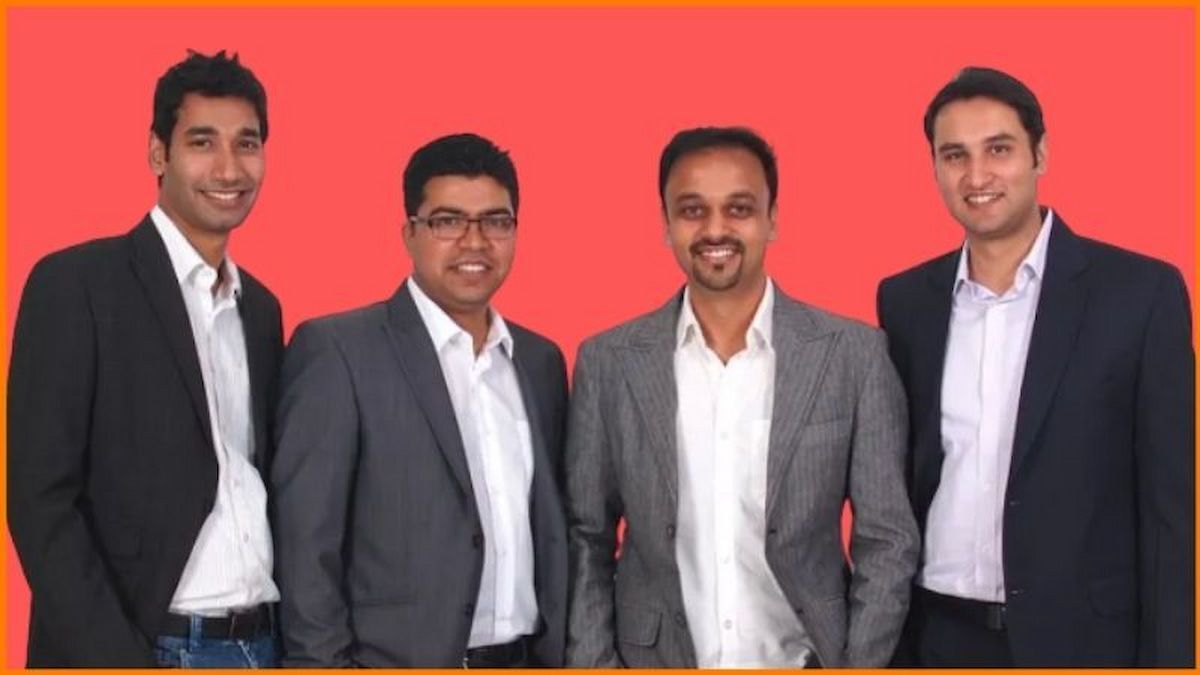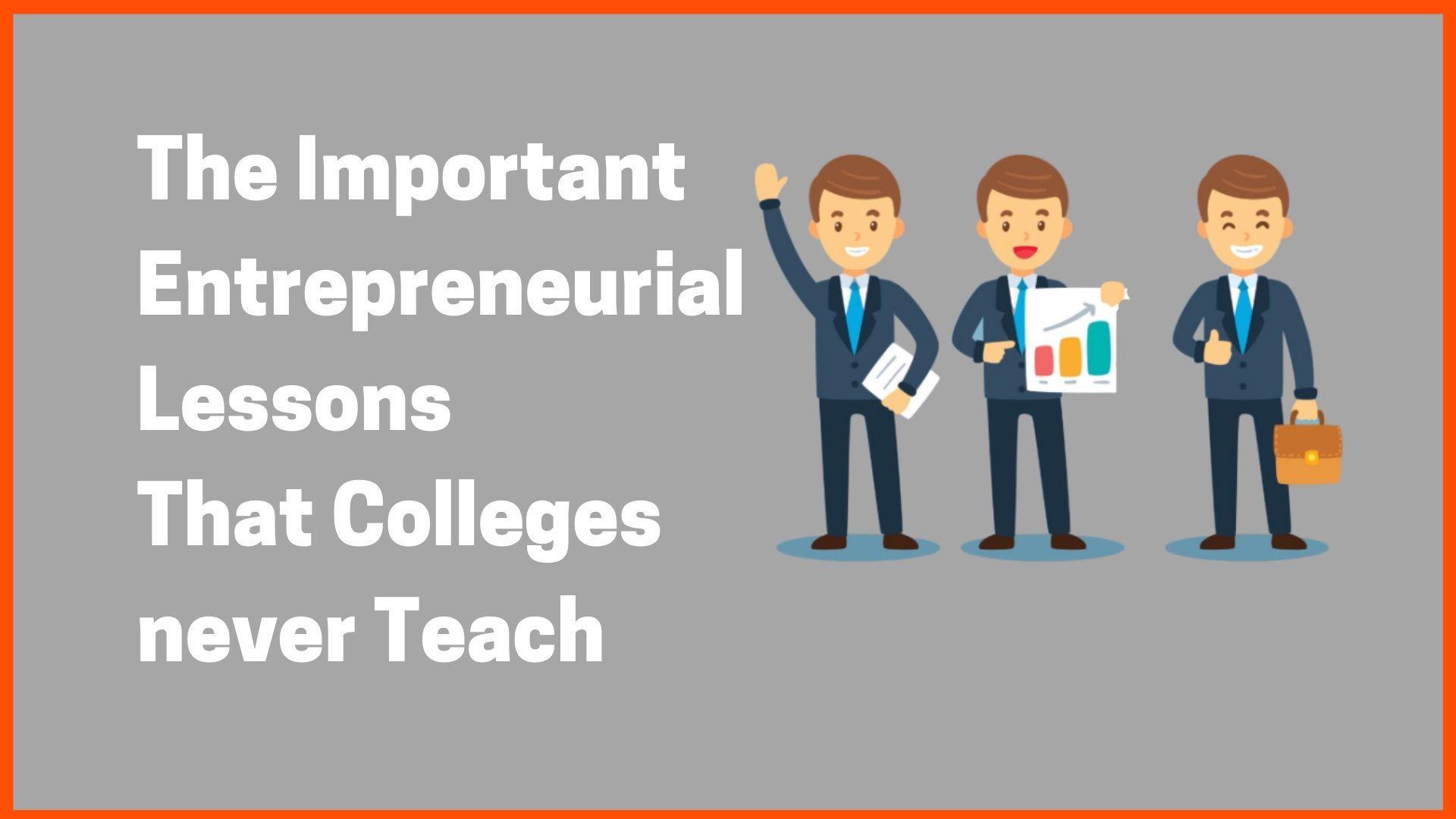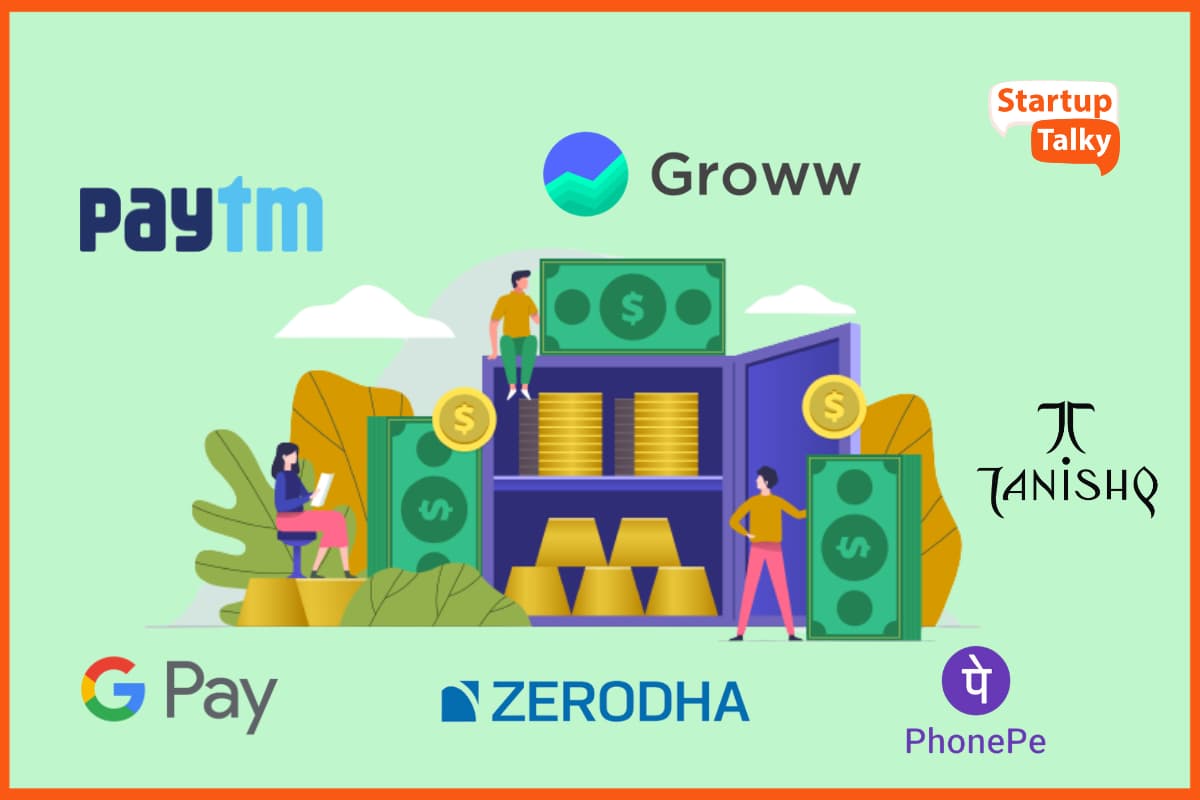StartupTalky presents Recap’23, a series of in-depth interviews where we engage with founders and industry leaders to explore their growth in 2023 and their predictions for the future.
EdTech, short for education technology, is flourishing. The pandemic has spurred companies to develop exciting tools—online courses, engaging learning games, and AI tutors. This shift aims to personalize education, overcome distance barriers, and enhance the learning experience.
Looking ahead, the EdTech industry is poised for remarkable growth. Projections indicate a compound annual growth rate (CAGR) of 15.2%. The global EdTech market is currently valued at $340 billion and is expected to reach $605 billion by 2027 (Research and Markets). The trajectory suggests a dynamic landscape, showcasing the increasing importance of technology in shaping the future of education.
In our recent interview for Recap’23, we connected with Monica Malhotra Kandhari, Managing Director of AASOKA & MBD Group. We delved into AASOKA’s impact on EdTech, discussing challenges, customer outreach strategies, future plans, and beyond.
StartupTalky: What service does AASOKA provide? What was the motivation/vision with which you started?
Monica Malhotra Kandhari: AASOKA Learning and Teaching Solution is a comprehensive blended learning platform designed to deliver a tailored and research-based K-12 curriculum developed by its in-house research team using cutting-edge learning resources. AASOKA works with schools to facilitate required tools and services to upgrade administrative and teaching processes. It provides a 360-degree solution, including LMS (Learning Management System), SMS (School Management System) fee management, attendance management, digital content, adaptive tests, homework and assignment creation, learning gap analysis, and qualitative/quantitative evaluation of learning outcomes per student. The goal is to make high-quality academic resources cost-effective, ensuring accessibility for all students and supporting schools throughout India. With a deep foundation in EdTech, educational content, and academic research, AASOKA holds a prominent position in the education sector.
StartupTalky: What new services have been added in the past year? What is/are the USP/s of AASOKA?
Monica Malhotra Kandhari: Last year saw the launch of our AASOKA Version 2.0, powered by advanced AI, revolutionizing the Edtech sector in India. The update enables seamless tracking of individual student progress within classes or across subjects using AI-driven analytics. These analytics predict student growth based on real-time performance analysis, understanding their unique learning styles. We have enhanced the dashboard and added features like the Daily Task Calendar, Digital Signatures, Leave Request System, and AI-driven Ask-A-Question, among many others, to enhance the learning experience, streamline interactions, and improve accessibility for students, teachers, and school management.
AASOKA stands out by offering personalized learning and tailored academic solutions for schools, focusing on customization to address each school’s specific challenges for better teaching and results. Our approach aligns with the National Education Policy 2020, emphasizing 21st-century skills for holistic learning. The learner-centric resources, crafted by our research team, use interactive multimedia content for an engaging learning experience.
StartupTalky: How has the Edtech industry changed in recent years, and how has AASOKA adapted to these changes?
Monica Malhotra Kandhari: In recent years, the EdTech industry has transformed significantly, driven by tech upgrades and evolving academic techniques. The new developments include online platforms for flexible learning, AI-driven personalised education, integrated, immersive learning, and a renewed focus on practical skills. To adapt, AASOKA has revamped itself to be a user-friendly platform, using adaptive tech for personalised learning, embracing AI/AR/VR for student engagement, aligning academic courses with modern job market needs, experiential learning, self-evaluation, and supporting teachers and institutions in tech integration. Adaptability is now pivotal for success in this rapidly changing EdTech realm. Content in AASOKA is updated regularly to align to NEP 2020 and, NCF-FS 2022 &NCF-SE 2023.

StartupTalky: How do you stay up-to-date on the latest trends and developments in the EdTech industry?
Monica Malhotra Kandhari: Staying on top of the EdTech market’s rapid evolution necessitates active engagement in industry events like conferences and seminars for firsthand exposure to emerging trends. Building a strong network within academic communities through online forums and professional associations allows us to stay in touch with contemporary insights. Also, our research team is always skimming through reputable publications and research papers to gain invaluable analysis of expert case studies. Additionally, building partnerships with academic institutions and tech firms gives AASOKA access to industry trends and innovations.
StartupTalky: What key metrics do you track to check AASOKA’s growth and performance?
Monica Malhotra Kandhari: Tracking vital performance metrics is crucial for assessing AASOKA as a product. In the Edtech industry, user engagement and retention rates signify AASOKA’s effectiveness in the long-term learning curve of students. Powered by real-time AI analysis, we get a deep insight into user behaviour and content performance, ensuring our strategies are always razor-sharp. This data-driven approach has yielded remarkable results, with a 6x increase in schools using AASOKA since 2022-23 and a 5x growth in our revenue, all while maintaining a high retention rate that speaks volumes about the value we deliver. Furthermore, analysing user feedback through surveys and reviews guides us in making anticipated tweaks to the platform, ensuring the sustainable growth of AASOKA. By continuously learning and adapting, we’re confident AASOKA will remain a beacon of progress in the education landscape.
StartupTalky: What were the most significant challenges AASOKA faced in the past year, and how did you overcome them?
Monica Malhotra Kandhari: In 2023, the EdTech world as a whole faced significant challenges due to rapid transformations in the global academic industry. Some of the major challenges that people still face include a lack of digital/ technical knowledge and minimal to no access to the internet and other resources to people in rural areas. While companies were catching up to quickly adapt to remote learning demands, AASOKA’s new-age online platform was already ahead of the curve. AASOKA upgraded its platform to handle more users, improving servers and internet capacity for a smoother experience. Similarly, meeting the changing needs of teachers and students meant developing engaging digital content fast, but partnering with experts helped us. We also improved customer support and tutorials to help everyone adjust to remote learning. These changes let us stay true to our commitment to quality education.
StartupTalky: Good service is something everyone is talking about in the service industry. How does AASOKA ensure that their clients are happy?
Monica Malhotra Kandhari: Maintaining a great standard of service and ensuring client satisfaction is key in education, just like any other industry. Building on MBD’s 67-year legacy of quality education, trusted products, and deep understanding of teachers’ needs, AASOKA takes a layered approach to understanding user needs. We actively engage with teachers and students through regular feedback surveys and direct communication. These insights guide AASOKA in refining its offerings to match the evolving learning trends in India, curating the platform accordingly. Importantly, AASOKA’s commitment extends beyond meeting user needs. With the educational landscape constantly shifting, we keep schools and teachers abreast of the latest policies and curriculum changes (NEP 2020, NCF) through dedicated resources and workshops. Additionally, we invest in our educators through regular Faculty Development Programs, equipping them with the latest teaching methods and technologies to deliver the most effective learning experiences for their students. Through these ongoing efforts, we ensure our clients feel heard, supported, and equipped to deliver exceptional learning experiences, ultimately keeping them happy and engaged with AASOKA.
StartupTalky: What are the different strategies you use for marketing? Tell us about any growth hack that you pulled off.
Monica Malhotra Kandhari: In our marketing endeavors, AASOKA follows a diverse strategy across multiple communication channels. Content marketing, including blogs and webinars, showcases niche academic expertise, engaging teachers and learners alike. Through social media, the brand shares informative, engaging content and success stories, nurturing a strong community all around. Moreover, targeted ads on social platforms drive user acquisition for the platform and boost our visibility through a word-of-mouth approach. Beyond the digital sphere, we actively engage through collaborative workshops with Sahodaya School Complexes and actively participate in various conferences and exhibitions to solidify AASOKA’s presence. In addition, AASOKA fosters educational enrichment through seminars, workshops, and teacher engagement programs, reinforcing its commitment to tailored solutions and collaborative learning experiences for K-12 schools.
StartupTalky: Foreign clients – this is what most of the service-based companies are looking for. What has been your experience?
Monica Malhotra Kandhari: In the context of AASOKA’s current focus and operations, the company has primarily been concentrating on serving schools across India. As of now, the outreach to foreign clients has not been initiated. However, it is part of our strategic plan to explore and expand into international markets in the future. AASOKA recognizes the potential value of catering to foreign clients and intends to incorporate this into its growth trajectory.
StartupTalky: What are the important tools and software you use to run AASOKA smoothly?
Monica Malhotra Kandhari: Behind the scenes of our smooth operation lay different in-house systems, each playing a crucial role in keeping things in tune. Our in-house tracking system tracks every shipment, ensuring timely deliveries and minimizing hiccups. For our internal operations, we rely on a dedicated system that functions as a project manager. It keeps everyone on the same page, with crystal-clear visibility into deadlines, tasks, and progress. This ensures seamless collaboration and eliminates the risk of missed deadlines or forgotten details. As for our support team, transparency is everything. A clear dashboard displays the current queue of needs, and with each resolved issue, a satisfying tick marks it off the list. This not only fuels our team’s motivation but also offers a real-time window into our service efficiency for any curious client. These are just a few examples of systems that power our smooth operation.
StartupTalky: What opportunities do you see for future growth in the EdTech industry in India and the world?
Monica Malhotra Kandhari: In India, driven by a growing population and increased internet access, there’s significant potential to improve the accessibility of education, especially in remote areas. People are not aware of the current changes in the education sector, including National Education Policy 2020. Some of the ways it can be tackled can be in the form of making smartphones cheaper, increasing the reach of the internet in remote areas, and improving digital literacy. Additionally, AASOKA is well-positioned to tap into the growing market for regional language education, aligning with the aspirations of the NEP 2020. This presents a significant opportunity to extend the reach of education to a wider audience, fostering inclusivity and catering to diverse linguistic preferences.
The rise of online learning platforms holds the potential to meet this demand for flexible learning experiences. Similarly, the integration of AI algorithms, Augmented Reality/Virtual Reality tools, and machine learning (ML) promises to enhance student engagement. Globally, the shift towards lifelong learning due to changes in the job market is fueling the growth of EdTech platforms.

StartupTalky: What kind of difference in market behaviour have you seen between India and the world?
Monica Malhotra Kandhari: The market behaviour massively varies between the Indian and the global markets, especially in the Edtech space. In India, there’s a surge in demand for affordable education, mainly focusing on coaching and skill development for competitive exams, due to a large population aspiring for prestigious admissions or job opportunities. Worldwide, there is a broader focus on lifelong, skill-based learning and professional development aligning with the industry’s needs. While both markets embrace online learning, the global market leans towards personalised, experiential learning using the latest tech, while an Indian student relies more on foundational content delivery. However, both markets are quick to adopt digital solutions to meet learning needs.
StartupTalky: What lessons did your team learn in the past year, and how will these inform your future plans and strategies?
Monica Malhotra Kandhari: The past year has been a period of great learning for the team. With our training team visiting schools to generate awareness of technological interventions in school education, we received a very positive response. Schools are genuinely willing to upgrade to meet current demands. We ensured our training team reached every school, discussing topics related to every new trend in the market.
Furthermore, our clients have responded positively, seeing their specific needs fulfilled. Whether it’s improving a school’s social media reach or providing strategies for boosting admissions, we take pride in being a complete school partner. Based on observations and responses, our current strategy is to incorporate every aspect of 21st-century schools’ needs within our blended learning solution.
StartupTalky: How do you plan to expand the customers, service offerings, and team base in the future?
Monica Malhotra Kandhari: In 2023, AASOKA partnered with 1,900 schools in the second year of its operations and will be targeting collaboration with 20,000 schools in the next three years. For expansion, AASOKA’s strategy focuses on customer outreach, a variety of services, and staying in tune with current changes in technology. We will use targeted marketing techniques to reach new markets and strengthen existing ones. Moreover, introducing specialised courses for emerging skills is key while constantly improving our platform and user experience on priority.
StartupTalky: One tip that you would like to share with another service company founder?
Monica Malhotra Kandhari: For fellow founders, my essential tip is to prioritise adaptability and responsiveness. Education, technology, and learning needs are ever-evolving. Therefore, being responsive is vital to staying relevant and meeting changing demands. Flexibility in strategy, quick adoption of new tech, and constant improvement based on user feedback are defining factors for success. Additionally, investing in curating your own high-quality educational content can be a game-changer. This will allow you to not only stand out from the crowd with unique offerings but also ensure the content aligns perfectly with your company’s vision and values.
StartupTalky extends its gratitude to Mrs. Monica Malhotra Kandhari for dedicating his valuable time and generously sharing his insights with all of us.









































